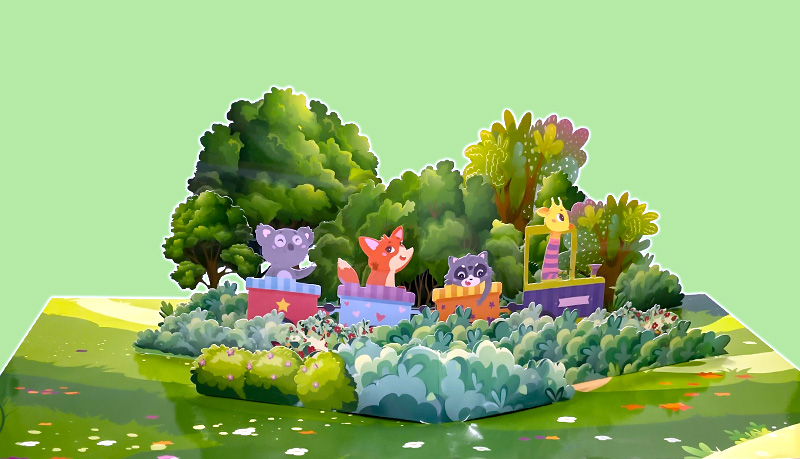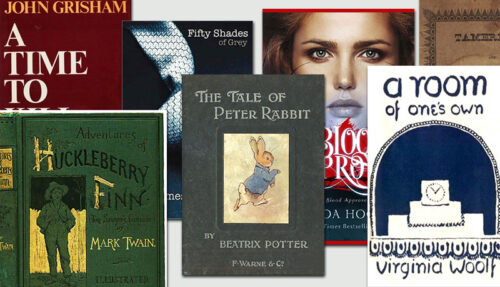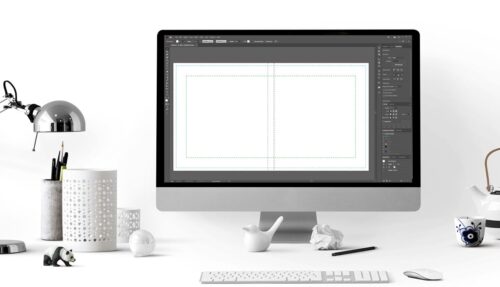Self-publishing pop-up books can be hugely rewarding. We'll guide you through how to get started from concept to completion

Pop-up books have always delighted children with their interactive and imaginative elements. If you’re a writer or illustrator looking to self-publish a children’s pop-up book, you’ve come to the right place. At QinPrinting, we have helped design and print several of the most beautiful custom pop-up books on the market today. Drawing on decades of experience, in this post we will walk you through the entire process, from conceptualization to printing and marketing.
The magic of pop-up books
Pop-up books are not just ordinary children’s books. They offer a unique reading experience that combines storytelling, artistry, and interactive elements in three dimensions. These books captivate young readers by bringing the story to life through three-dimensional pop-up illustrations that literally jump off the page.
The tactile nature of pop-up books engages children’s senses and enhances their reading comprehension and imagination. Pop-up books combine all the elements of a normal board book with game-like inclusions, which keep children coming back to interact with them again and again.
Self-publishing pop-up books
Self-publishing a pop-up book comes with its own set of challenges compared to other types of children’s books. The complexity of designing and manufacturing pop-up elements requires a deeper understanding of paper engineering and digital art than you need for a regular board book. However, with determination and the right guidance, you can overcome these challenges and create a stunning pop-up book for children to enjoy.
Few printers specialize in pop-ups, but we have an expert team of in-house designers and talented paper engineers on hand to help and guide you every step of the way.
If it’s your first pop-up book design, we’ll be honest with you; there’s a learning curve to climb. But as with any new skill, once you have even a little experience under your belt, it gets easier. And if you’re ever stuck or struggling, just et in touch with your named consultant and we’ll do the heavy lifting for you.
Planning your pop-up book
Before you start the process of self-publishing your pop-up book, it’s important to have a coherent plan and concept in mind. Begin by brainstorming ideas for your story and the pop-up elements that will enhance the narrative. Popular pop-up elements to include are:
- 3D dioramas built around v-folds, box folds, and layers
- Slides and wheels
- Windows and reveal flaps
- Pulls and pivots to create movement
When you’re working out the mechanics of your design, think about the age group you’re targeting, the educational value of your book, and the themes you want to explore. It’s always a good idea to do market research to see how other successful pop-up books have been designed, to identify potential gaps in the market, and make sure your book stands out among the competition.
Writing a good story
Writing for children requires a unique approach, and writing for pop-up books adds another layer of complexity. While you have limited space for text in a pop-up book, each word must count. Focus on telling a great story with memorable characters and engaging plotlines. Use simple language that appeals to your target age group and encourages interaction with the pop-up elements.
Collaborating with a professional editor experienced in children’s books can help elevate your writing and ensure it resonates with young readers. Don’t imagine that because you have all these wonderful interactive elements that you can put less work into the text.
Of course, an alternative would be to design a pop-up with no text, but if you aim to encourage reading skills in your juvenile audience, you should have at least one sentence per spread.
Pop-up scenes
Despite the continued importance of the text, illustrations are at the heart of any pop-up book. They bring the story to life and create a visual and tactile experience that complements the text.
When illustrating a pop-up book, keep in mind that the images should be bright, bold, and easy to understand. Avoid overcrowding the scenes with too much visual information, but also include surprise elements and running gags to keep children engaged. Create a central character that appears throughout the book to provide continuity and connection for young readers.
Pop-up book layouts
Designing the layout for a pop-up book requires careful consideration of how the pages will unfold and interact with the pop-up elements. Think in terms of spreads, where two pages face each other, and plan the placement of text and illustrations accordingly. The font should be easy to read, but not overpower the illustrations.
Collaborating with a professional designer or using design software can help you create visually appealing layouts that maximize the impact of your pop-up scenes. You’ll get the best results if you design in separate layers, use vectors for your graphics, and make testable prototypes at each stage of development to make sure the mechanics work smoothly.
Printing pop-up books
Printing pop-up books can be challenging because of the specialized nature of the format. Digital and print-on-demand (POD) services are simply not equipped to handle the complex manufacturing process of pop-up books. That’s why you need an established offset printer like QinPrinting that specializes in pop-up book production.
We’ll put our expertise and decades of experience in producing high-quality pop-up books at your disposal. We’d love to hear from you to chat through your ideas and needs and come up with a mutually agreeable solution to find the best fit for your project.
Financing your pop-up book project
Self-publishing a pop-up book requires financial investment, especially considering the specialized printing and production costs involved. Traditional publishing routes may not be viable for pop-up books because of their niche market appeal.
If you go the self-publishing route, we recommend you consider crowdfunding platforms like Kickstarter to raise funds for your project. Present an interesting campaign that showcases your book’s concept, artwork, and the unique experience it offers to potential backers. If you choose Kickstarter as your crowdfunding platform, we can offer you special discounts and coupons if you choose to print your book with us.

Marketing your pop-up book
Once your pop-up book is printed and ready for distribution, you’ll need to market and promote it to your target readership.
- Develop a marketing strategy that includes online and offline channels to reach parents, educators, and children.
- Your crowd funder is a significant starting point and you can leverage it to establish an email list and make your first direct sales. Your social media platforms, a dedicated website or landing page, and collaborations with influencers or bloggers in the children’s book niche are all potentially inexpensive and effective routes to explore when marketing your book.
- You should also take part in book fairs, author events, and school visits to generate buzz and increase visibility for your pop-up book.
Talk to us! We're here to help
Self-publishing a children’s pop-up book is a rewarding and creative endeavor. By following the steps outlined in this post, you can navigate the challenges, unleash your imagination, and bring your pop-up book to life. Remember to focus on storytelling, engage young readers with captivating illustrations, and use a printer that specializes in pop-up book production.
With determination, passion, and the right resources, you can create a cherished pop-up book that will inspire and delight children for years to come. Get in touch today to chat through your needs or to ask for a no-obligation quote.
Shoot us an email to [email protected] or call us on +1 951 866 3971 and we’ll be delighted to do all we can to help you. We can’t wait to help you make your pop-up book a tremendous success!










